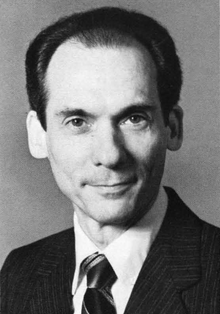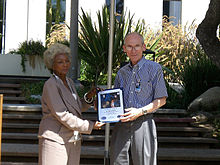
Jet Propulsion Laboratory (JPL) is a federally funded research and development center in Pasadena, California, United States. Founded in 1936 by Caltech researchers, the laboratory is now owned and sponsored by the National Aeronautics and Space Administration (NASA) and administered and managed by the California Institute of Technology.

Voyager 2 is a space probe launched by NASA on August 20, 1977, to study the outer planets and interstellar space beyond the Sun's heliosphere. As a part of the Voyager program, it was launched 16 days before its twin, Voyager 1, on a trajectory that took longer to reach gas giants Jupiter and Saturn but enabled further encounters with ice giants Uranus and Neptune. Voyager 2 remains the only spacecraft to have visited either of the ice giant planets, and was the third of five spacecraft to achieve Solar escape velocity, which allowed it to leave the Solar System.

The NASA Deep Space Network (DSN) is a worldwide network of American spacecraft communication ground segment facilities, located in the United States (California), Spain (Madrid), and Australia (Canberra), that supports NASA's interplanetary spacecraft missions. It also performs radio and radar astronomy observations for the exploration of the Solar System and the universe, and supports selected Earth-orbiting missions. DSN is part of the NASA Jet Propulsion Laboratory (JPL).
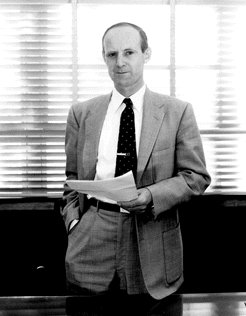
William Hayward Pickering was a New Zealand-born aerospace engineer who headed Pasadena, California's Jet Propulsion Laboratory (JPL) for 22 years, retiring in 1976. He was a senior NASA luminary and pioneered the exploration of space. Pickering was also a founding member of the United States National Academy of Engineering.

Pale Blue Dot is a photograph of Earth taken on February 14, 1990, by the Voyager 1 space probe from an unprecedented distance of approximately 6 billion kilometers, as part of that day's Family Portrait series of images of the Solar System.
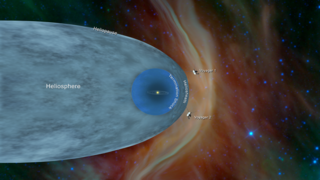
The heliosphere is the magnetosphere, astrosphere, and outermost atmospheric layer of the Sun. It takes the shape of a vast, tailed bubble-like region of space. In plasma physics terms, it is the cavity formed by the Sun in the surrounding interstellar medium. The "bubble" of the heliosphere is continuously "inflated" by plasma originating from the Sun, known as the solar wind. Outside the heliosphere, this solar plasma gives way to the interstellar plasma permeating the Milky Way. As part of the interplanetary magnetic field, the heliosphere shields the Solar System from significant amounts of cosmic ionizing radiation; uncharged gamma rays are, however, not affected. Its name was likely coined by Alexander J. Dessler, who is credited with the first use of the word in the scientific literature in 1967. The scientific study of the heliosphere is heliophysics, which includes space weather and space climate.

Charles Elachi is a Lebanese-American professor (emeritus) of electrical engineering and planetary science at the California Institute of Technology (Caltech). From 2001 to 2016 he was the 8th director of the Jet Propulsion Laboratory and vice president of Caltech.
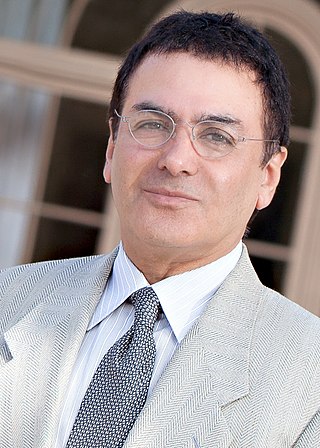
Firouz Michael Naderi was an Iranian American scientist who spent 36 years in various technical and executive positions at NASA's Jet Propulsion Laboratory (JPL), where he contributed to some of America's robotic space missions.

Albert Roach Hibbs was an American mathematician and physicist affiliated with the Jet Propulsion Laboratory (JPL). He was known as "The Voice of JPL" due to his gift for explaining advanced science in simple terms. He helped establish JPL's Space Science Division in 1960 and later served as its first chief. He was the systems designer for Explorer 1, the USA's first satellite, and helped establish the framework for exploration of the Solar System through the 1960s. Hibbs qualified as an astronaut in 1967 and was slated to be a crew member of Apollo 25, but he ultimately did not go to the Moon due to the Apollo program ending after the Apollo 17 mission in 1972.

Bruce Churchill Murray was an American planetary scientist. He was a director of the Jet Propulsion Laboratory (JPL) and co-founder of The Planetary Society.
Stephen J. Edberg is a scientist at the Jet Propulsion Laboratory. He is perhaps best known for creating collaborative efforts between amateur and professional astronomers. A professional astronomer since 1970, Edberg still considers himself to be an active amateur astronomer as well and is an active astronomical observer, photographer, and telescope maker. He presently serves as staff astronomer for the Solar System Exploration website posted by NASA Headquarters and staff scientist for Earth science communication and for Exoplanet Exploration communication.

Raymond L. Heacock was an American engineer who spent his career at NASA's Jet Propulsion Laboratory where he worked on the Ranger program in the 1960s and on the Voyager program in the 1970s and 1980s. A Caltech engineering graduate, he was the winner of the James Watt International Medal for 1979.
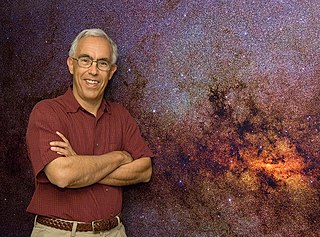
Dr. Thomas A. Prince is the Ira S. Bowen Professor of Physics at the California Institute of Technology and holds a joint appointment with Caltech’s NASA Jet Propulsion Laboratory (JPL) as a senior research scientist. Between May 2001 and June 2006, Prince was the chief scientist at JPL. He is currently the director and Allen V.C. Davis and Lenabelle Davis Leadership Chair for the W. M. Keck Institute for Space Studies at Caltech.

Susan G. Finley, a native Californian, has been an employee of NASA's Jet Propulsion Laboratory (JPL) since January 1958, making her the longest-serving woman in NASA. Two days before Explorer 1 was launched, Finley began her career with the laboratory as a human computer, calculating rocket launch trajectories by hand. She now serves as a subsystem engineer for NASA's Deep Space Network (DSN). At JPL, she has participated in the exploration of the Moon, the Sun, all the planets, and other bodies in the Solar System.

Sarah Milkovich is lead of Science Operations for the Mars 2020 rover at Jet Propulsion Laboratory. She was investigation scientist for the HiRISE camera on the Mars Reconnaissance Orbiter.
Candice Joy Hansen-Koharcheck is a planetary scientist. She is responsible for the development and operation of the JunoCam, for which she received the NASA's Outstanding Public Leadership Medal in 2018.

Anne L. Kinney is an American space scientist and educator. Kinney is currently the Deputy Center Director at NASA Goddard Space Flight Center. Previously, she held positions as the head of the Directorate for Mathematical and Physical Sciences (MPS) for the National Science Foundation (NSF), the Chief Scientist of the W.M. Keck Observatory, Director of the Solar System Exploration Division at NASA Goddard Space Flight Center, Director of the Origins Program at NASA Jet Propulsion Laboratory, and Director of the Universe Division at NASA Headquarters. She earned a bachelor's degree in astronomy and physics from the University of Wisconsin-Madison and a doctorate in astrophysics from New York University, and has published more than 80 papers on extragalactic astronomy. She was an instrument scientist for the Faint Object Spectrograph that flew on the Hubble Space Telescope.

John R. Casani is an American engineer. He worked for the National Aeronautics and Space Administration (NASA) at the Jet Propulsion Laboratory, where he managed the Voyager, Galileo, Cassini and Prometheus projects.

Michael H. Freilich was an American oceanographer who served as director of the NASA Earth Science division from 2006–2019.
Rochus Eugen (Robbie) Vogt is a German-American physicist, famous as the director and principal investigator of the LIGO project from 1987 to 1994.

